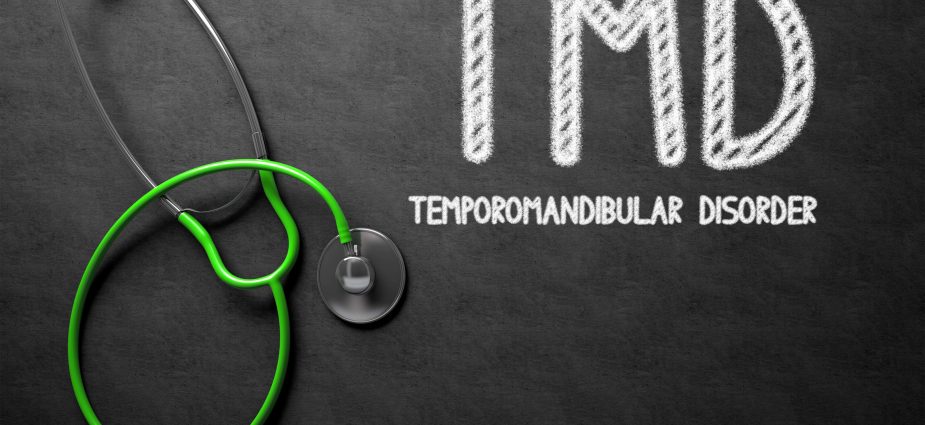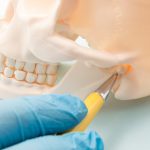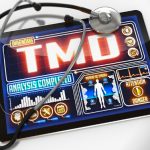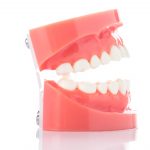Treatment for TMJ Disorder
Medically Reviewed by: Ivan F. Stein, DDS

There are a number of treatment options available to correct TMJ disorder. Your particular treatment should be determined through consultation with a dental professional who is highly experienced in temporomandibular joint problems. Ideally, your dentist should have expertise in evaluating jaw-to-bite relationships and experience with proper treatment procedures such as occlusal equilibration and the use of intra-oral appliances.
Treatment Options: Conservative is Key
“Conservative” is the key word when it comes to TMD treatment. Most treatments are simple and can be done at home without the need for surgery. The most severe cases may require treatment with splints, mouth guards, or other traditional forms of TMD therapy like physical therapy.
Regardless of the treatment prescribed for you, it is important that you follow your dentist’s instructions. You should also keep up with routine dental visits so your dentist can regularly monitor your TMJ symptoms.
In addition, the TMJ Association advises patients to keep in mind that there is currently no evidence to suggest that TMD can be prevented. Therefore, caution is advised regarding any treatment(s) presented as providing this benefit.
Traditional Treatment Options
A careful examination of the joints and occlusion is a critical step before a specific treatment is selected. Some specialists have a computer to analyze your bite. Only a small percentage of TMD cases require surgical intervention. If an improper bite is the cause of the TMD, many bite corrections can be achieved with orthodontics, restorations, equilibration or appliance therapy.
Appliance Therapy (Splint or Mouth Guard)
Typically the first line of treatment provided by your dentist will be the use of a splint. The splint is worn to reduce stress on the jaw and to allow the muscles to function optimally and/or to cover the deflective interferences affecting the bite so that the lower jaw can be repositioned into the socket properly. If a splint helps relieve the pain, it is possible that your bite or parafunction was causing the problem.
Many types of splints and appliances may be fabricated by your dentist. The appliance that is best for you will be decided based upon clinical findings, symptoms, and diagnostic tests (X-rays, etc.). Such appliances may help improve your bite while it is in place, thus providing the ability for the lower jaw to fall properly into the temporomandibular joint socket.
Occlusal Equilibration
If your dentist determines that no structural disorder exists in the joint, but that there are deflective interferences on the teeth that are affecting the bite and causing an improper jaw closure, you may undergo occlusal equilibration or your dentist may elect to treat the bite with an appliance.
Many TMJ cases can be corrected with occlusal equilibration, particularly when performed by a dentist experienced in TMD. Occlusal equilibration involves selective reshaping of the biting surfaces of the teeth and is often the best choice for eliminating deflective interferences so that the jaw can close properly. Once the lower jaw is able to close properly into position within the temporomandibular socket, your pain may be relieved immediately. Pain relief is typically achieved when the muscles are able to function properly.
Treating Structural Disorders
If your dentist suspects a structural disorder within the joint itself, further studies may be necessary prior to treatment to ensure that a proper diagnosis is made. The panoramic X-ray is an excellent screening tool though other diagnostic tests may be required.
These include:
- MRI (magnetic resonance imaging) may be used to help your dentist view the soft tissue area surrounding the disc joint.
- CT (computed tomography) scan to evaluate the bony areas of the jaw and hinge joint.
Depending on what these images reveal, your dentist may recommend an intra-oral appliance, orthodontia, or maxillofacial surgery. You may be referred to an oral surgeon or oral and maxillofacial surgeon who will further evaluate and treat your condition.
Surgical Treatment
Typically, surgery is only considered after all other conservative treatment options have been attempted. It is important to know that surgery may not always resolve TMD issues.
All TMJ-related surgery is performed under general anesthesia.
Some of these procedures include:
- Arthrocentesis: During this minor procedure, your surgeon cleanses the joint by inserting needles into the joint area and dispensing sterile fluid. In some cases, the surgeon inserts a scalpel-like instrument inside the joint to remove any tissue adhesions and reposition the disc in the joint hinge.
- Arthroscopy: During this procedure, your surgeon makes an incision at the temple point in front of the ear to reach an endoscope into the surrounding area. The endoscope provides a visual guide so that your surgeon can remove any adhesions, treat inflammation, or reposition the disc.
- Open Joint Surgery: This may be the only option that provides access to deteriorating bony structures, tumors, severe scarring, or chipped bone areas. Depending on the type of problem, your surgeon may use a scalpel to remove or re-sculpt the affected area.
Alternatively, open-joint surgery may be performed. This may be the only option that provides access to deteriorating bony structures, tumors, severe scarring or chipped bone areas. Depending on the type of problem, your surgeon may use a scalpel to remove or re-sculpt the affected area.
Treatment Costs
TMJ treatment costs depend on several factors, including the expertise of the dentist, the location of the dentist, the type of dental insurance you have, and the facility fees for procedures. For example, if occlusal orthotics or a removable appliance is prescribed as part of your TMJ treatment, the cost could be roughly $800 to $3,500.
Depending on the type of medical and dental insurance you have, insurance companies may offer a reimbursement of the total procedure costs.
Alternative Treatments
Alternative medical treatment for TMD is considered less conservative and unnecessary if you initially receive proper diagnosis and treatment.
Alternative treatments include transcutaneous electrical nerve stimulation (TENS), ultrasound, trigger-point injections, and radio wave therapy. TENS and radio wave therapy send low levels of electrical or radio waves of energy to the affected area in order to stimulate blood flow to the joint and surrounding area. However, these options do not treat the causes of TMD and may only provide limited, temporary, symptomatic relief.
Botox
Once reserved for lessening the tell-tale signs of aging, such as annoying wrinkles and frown lines, Botox injections are being used more frequently in dental offices as “off label” treatments for more troublesome maladies such as TMD. Scientific studies have shown that patients who received the injections experienced significant improvements in pain, function, ability to open their mouth, and levels of tenderness to palpation.
Botox is injected into the temporalis, medial pterygoid (deep jaw muscle), and masseter muscles that together move the jaw. Botox blocks nerve signals that cause uncontrollable muscle movements, essentially relaxing the muscles.
Botox injections take only 10 to 15 minutes and remain effective for anywhere between 2 and 6 months. Therefore, like its cosmetic counterpart, Botox TMD treatments must be repeated every few months. If you have TMD and your dentist determines that you are a candidate for this treatment, how often you’ll need to receive Botox injections to relieve symptoms will depend on the severity of your condition.
To achieve a successful outcome, it is important for your dentist to use the correct injection technique as well as follow the appropriate dosage guidelines.
Cost of Botox Treatment
The cost of the Botox treatment will vary based on where you live, where you receive treatment, and the severity of your condition (and therefore how many Botox injections are needed). Botox treatment is usually charged on a per-visit basis.
Most dental insurance companies do not cover Botox treatments because they are “off label,” optional treatments. Therefore, the costs associated with your treatment most likely will be out-of-pocket expenses. However, financing or payment plans may be available.
[updated May 13, 2019]
About the Reviewer
 Ivan F. Stein, DDS, is a recognized innovator in neuromuscular and cosmetic dentistry. He has dedicated two decades of his career to researching and treating functional disorders of the jaw and mouth – including temporomandibular joint disorder (TMD) and excessive snoring caused by obstructive sleep apnea (OSA) – as well as full mouth reconstruction.
Ivan F. Stein, DDS, is a recognized innovator in neuromuscular and cosmetic dentistry. He has dedicated two decades of his career to researching and treating functional disorders of the jaw and mouth – including temporomandibular joint disorder (TMD) and excessive snoring caused by obstructive sleep apnea (OSA) – as well as full mouth reconstruction.
Dr. Stein earned his Doctor of Dental Surgery degree at prestigious Georgetown University Dental School. He has personally developed a number of successful oral appliances for use in neuromuscular dentistry, including Oravan OSA, an oral appliance for the treatment of obstructive sleep apnea. Dr. Stein was named a Top Dentist in NJ Monthly Magazine and has been invited to appear on ABC and CNBC to discuss dentistry as an art, as well as the safety of dental materials. He is in private practice at Headache and TMJ Center of New Jersey, offering a wide-range of TMJ treatment options to relieve painful TMD symptoms, allowing patients to eat, yawn, and smile again without any discomfort.






